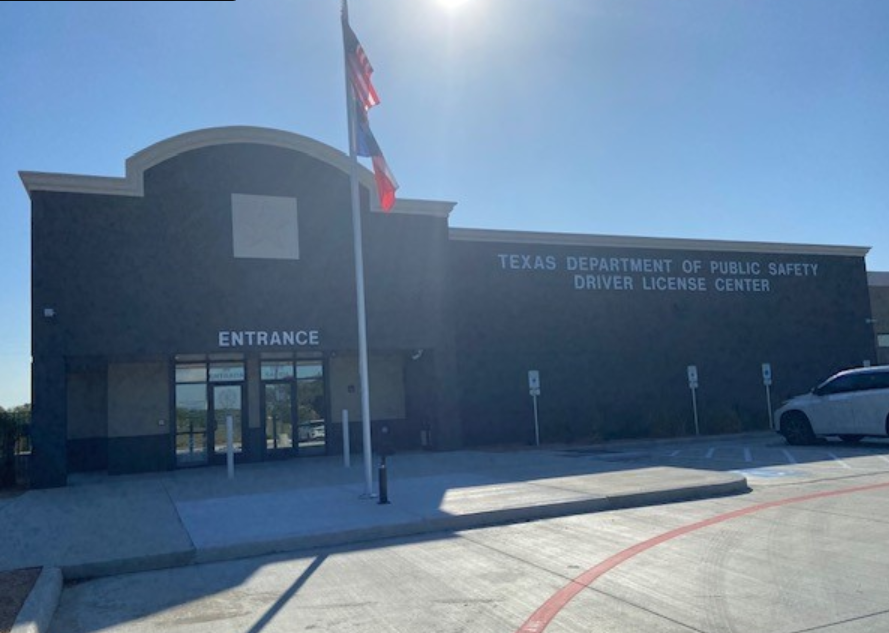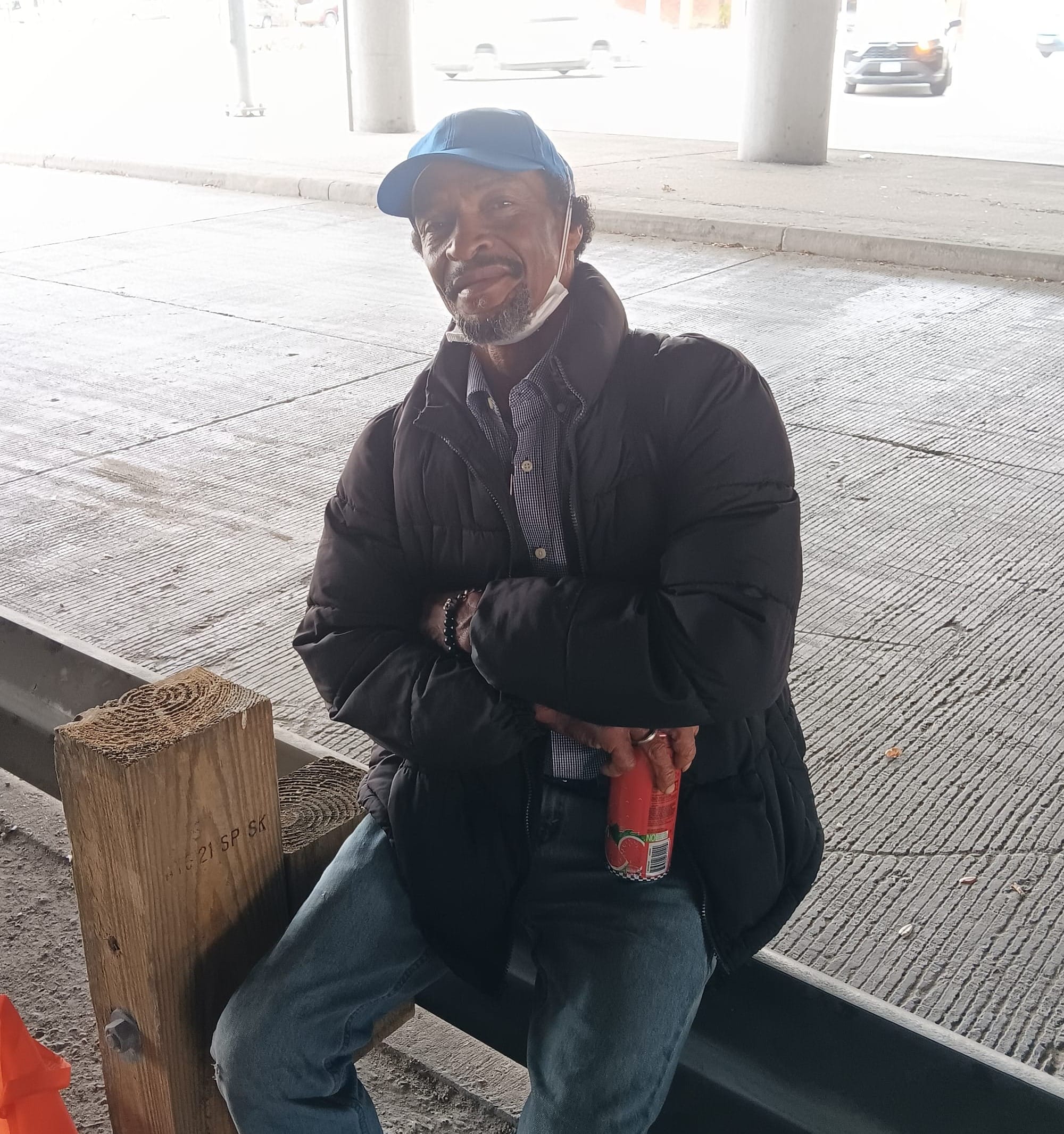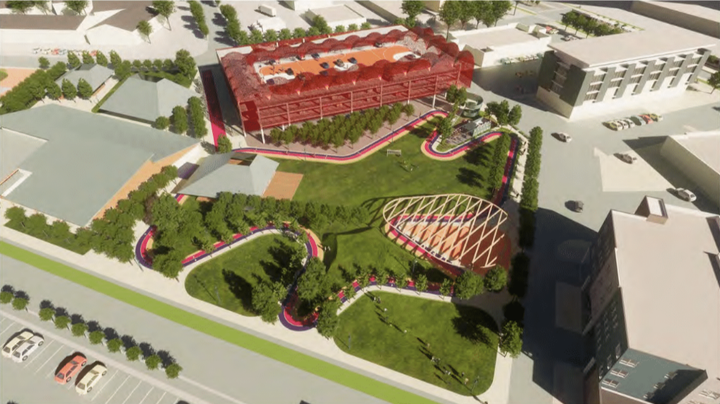Climbing off the Streets, Part 1: What an ID Really Means

To American teenagers, a driver’s license is the gateway to independence, quick transportation, and...insurance bills.
But for America’s homeless population, a driver’s license can mean the difference between getting housing or being stuck on the streets. But most homeless Houstonians I know—and I’ve talked to dozens—don’t have a photo ID.
Dale Malone, 59, and Leroy Conner, 64, are no exception. The friends live under a bridge along US-59 in Sharpstown. As I walk up on a grey December morning, they’re packing up their belongings to prepare for our trip to the DPS in Rosenberg to get IDs.
Leroy, sporting a salt-and-pepper goatee, has his backpack ready. Dale—sporting a bushy beard that would be worthy of Santa Claus if it was white instead of grey—is putting items on his shopping cart, which he’ll be leaving behind at the bridge.

Theft is common on the streets, so many homeless folks are wary to leave their belongings unattended. But for Dale and Leroy, the risk is worth it.
Without a valid photo ID, it’s difficult to legally get a job in Texas. Without a job, it’s difficult to get an apartment (not to mention that apartment complexes usually require applicants to show ID anyway). Without ID, it’s also difficult for disabled or retirement-age homeless folks to get Social Security.
If you still have your birth certificate, social security card, and utility bills in your name, it’s not that difficult to get a replacement driver’s license or Texas ID. But what if you’ve lost all your documents? And what if you don’t even have an address?
Without a personal locked door to sleep behind at night or leave belongings behind during the day, a homeless individual in Houston is almost guaranteed to become a victim of theft. Often, that’s how homeless folks lose their IDs, birth certificates, and more.
Dale and Leroy don’t want their belongings stolen today, so they roll their bicycles and the shopping cart against a metal railing next to the road. Dale pulls out a short, blue bike lock and tries to rope it around the bicycles, the chassis of the shopping cart, and a steel cable on the railing.
The bike lock cable seems too short, but Dale wrestles with it, wheezing. He says he has COPD, cracked ribs, and pneumonia.
Finally, he lets Leroy give it a try. Leroy loops the lock through a different spot and clicks it shut.
It’s still no guarantee that their belongings will be there when they get back. Just to be safe, Dale carries his sleeping bag and red hand-crank radio to my car.
We drive. It’s no guarantee that they’ll get IDs today, either. Dale doesn't have a working cellphone, so he couldn’t call ahead. But he says that when he’s been to the DPS in Rosenberg before, they were able to see him without an appointment—and they have shorter lines than Houston.
During what should have been a twenty-five minute trip, Dale says that another homeless man stole his wallet and driver’s license around three years ago. Since then, his wallet has been stolen many more times, but he’s never had an ID. He hopes to get a replacement license today.
Leroy, on the other hand, just wants a Texas ID. He says that the last time he saw his ID was four years ago when he walked into a store and took his ID out of his wallet. Later that day, at work, he realized both were gone.
Dale is supposed to navigate, but gets sidetracked talking about his past (he grew up on a farm near Rosenberg). We miss our turn.
After a long U-turn, we make it to the large strip mall where the DPS used to be. Texas stars are fixed above two doorways, but the building section displays a big sign: “For lease.”
After a jaunt along a back street, we find the DPS’s new location.
Just inside the door, several machines with screens line the left wall. A woman walks up to us right away. “Do you have an appointment?”
Dale says no.
“You have to have an appointment, and the earliest we have is January.” She begins to turn away.
Dale explains why he couldn’t make an appointment before and asks if he could make one for today. The woman looks skeptical, but says, “Go to Station 5.”
We get in line. Finally, through a plexiglass barrier, the woman behind the desk tells Dale and Leroy they can’t make appointments for today because no one has canceled, and she can’t guarantee that anyone will cancel today.
Dale asks if he can wait around or come back later today.
“I wouldn’t recommend that,” she replies.
He asks if he can make an appointment for January.
The woman requests Dale’s phone number. He says he doesn’t have one, so he asks if he can use mine. I give it to her. The same thing happens with Leroy.
She gives both men printouts confirming their appointments.
“What happens if someone doesn’t have a phone number?” I ask. I wanted to know what would have happened if I wasn’t there.
The woman says that she would ask for their email.
“And what happens if someone doesn’t have an email?”
She shakes her head. “I don’t know what to tell you.”
We drive back to the bridge. Getting—and keeping—an appointment is just the first step. Dale and Leroy still don’t know whether they’ll have enough documents to get their IDs. Leroy has the most documents, but he still says he visited the DPS three times this summer and never got anywhere.
But during a recent trip to the SSA office, Leroy learned he can make it one step closer by procuring his medical record from a local hospital. Both Dale and Leroy plan to do that before their appointments at the DPS in January.
I’ll be there.
Correction: Dale's age has been updated from 58 to 59.
This article is the first in a series (read Part 2 here). I’ll be following Dale Malone and Leroy Conner in their quest to climb off the streets of Sharpstown. I am aware of Operation ID and Texas ID Advocates, and I will be seeking their assistance. But the last time I tried to connect a homeless man to Operation ID, the organization was inundated with clients. Currently, its website says, “OPERATION ID IS BY APPOINTMENT ONLY FOR CLIENTS REFERRED BY APPROVED AGENCIES.” So many hoops to jump through… Does anyone take walk-ins these days?
Conflict of Interest Statement: It should be obvious, but I take a personal interest in this story. After all, I drove Dale and Leroy to Rosenberg. I've known them for a while, especially Dale (I've spent countless hours in conversations with him over the last four years). That's why I used their first names instead of following the standard journalistic practice of using last names. I'm taking a more personal approach for this series. Both men have also attended my church—Dale on a semi-regular basis. Finally, several Christian friends and I are involved in an unofficial homeless ministry that meets on a weekly basis, and we often speak with these two men.




Comments ()